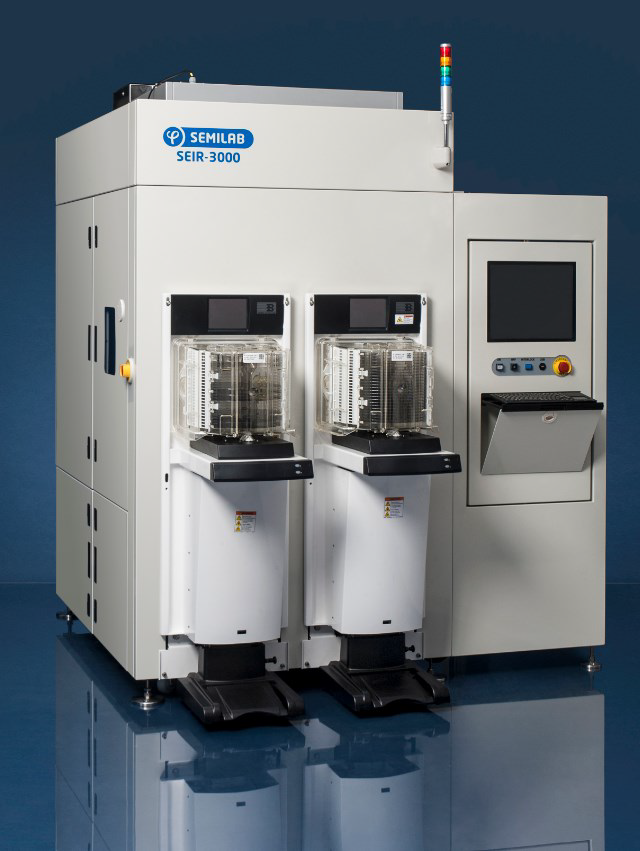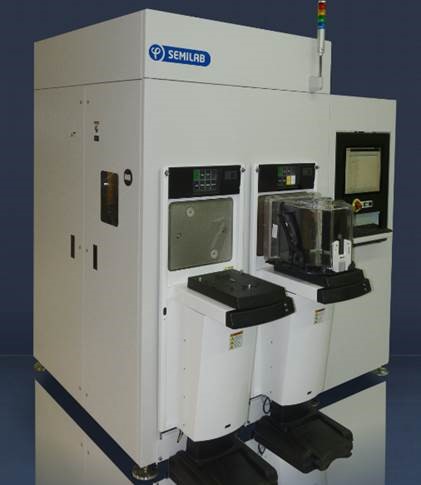Application
CHARACTERIZATION OF 3D STRUCTURES
Driven by the continued demand for increased functionality in integrated circuits, the trend toward ever-higher levels of integration has resulted the use of increasingly three-dimensional structures in order to gain more functions out of a given area. This is evident in several areas of both device and interconnect technology. One example is the continuing trend toward higher aspect ratios in vias, contacts and memory capacitor structures. On a much larger length scale, the use of through-silicon via (TSV) structures to create 3D interconnects enables vertical stacking of multiple dies. Each of these three developments leads to new challenges in process control and metrology, and a common theme is required between them to measure profiles and depths of etched structures. While diagnostic techniques, such as SEM, AFM and SPM play an important role in characterizing processes, optical metrology methods are highly desired, because they provide rapid measurements on product wafers, enabling routine monitoring and advanced process control.
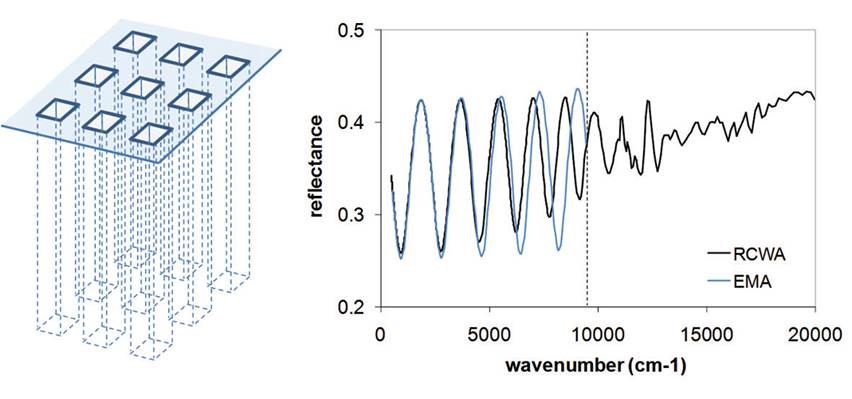
Figure 1. 3D array of square trenches in silicon (left) and corresponding simulated infrared spectra (right), illustrating agreement between RCWA and EMA calculation methods in the long wavelength limit.
Model-based infrared reflectometry (MBIR) combines a photometrically accurate FTIR measurement system with a spectral range of 1-20 μm, and model-based analysis of reflectance spectra from multilayered films and structures. The infrared wavelength range provides unique advantages for the measurement of 3D-etched structures, which have already been exploited in applications of MBIR for various structures, including memory capacitors, power device trenches and isolation trenches.
One principle advantage of the infrared metrology is the simplified modeling of complex periodic structures. At wavelengths, greater than the pitch of a structure, the light propagates through the structure as if it was a homogeneous medium with an effective refractive index. This can be calculated from the geometry of the structure and the refractive indices of its component materials by using an effective medium approximation (EMA). If the structure parameters, such as trench width vary with depth, it is modeled as a stack of multiple layers, each characterized by its own effective refractive index. Therefore the problem of modeling the optical response of a complex etched structure can be reduced to the simpler problem of modeling a multilayer stack.
To illustrate this point, see the example presented in Figure 1. The figure shows simulated spectra for 45 degrees incidence and S-polarization for an array of square trenches etched in silicon. The trenches are 1 micron deep, have a pitch of 0.25 microns and have a width of 0.125 microns. The figure shows both an exact calculation using rigorous coupled-wave analysis (RCWA) and a simplified calculation using a Maxwell-Garnett type EMA. A vertical line corresponding to about 10,000 cm-1 (that is a wavelength of 1 micron) indicates the “diffraction threshold”, WHERE the first transmitted diffraction order emerges. In the short-wavelength range to the right of the threshold there is a rather complex spectrum typical for scatterometry. In the infrared range to the left of the threshold, the diffraction is absent. The spectrum comprises a regular pattern of interference fringes arising from the interference of light reflected from the top and bottom of the trench structure. As per the figure, the fringes can be well approximated by using the EMA method. Parameters of the structure, such as trench depth and width are readily determined from the period and amplitude of the fringes. Thus the long-wavelength approach greatly simplifies the measuring of 3D-etched structures. Note that the advantage is not only in the ease of modeling, but also in the fact that infrared spectra themselves are rather simple and their relationship to the parameters of the structure can be readily understood.
Technology
MODEL-BASED INFRARED REFLECTOMETRY
Model-Based Infrared Reflectometry is a thin film metrology inspection system that provides fast, repeatable, and non-destructive measurements on process wafers.
The IR series family of products uses proprietary Model-Based Infrared Reflectometry (MBIR) technology to deliver high throughput, low COO, non-contact, non-destructive measurements of the dimensions, composition and uniformity of etched structures and films used in integrated circuit manufacturing. The unique MBIR technology and analysis capability simplifies system calibration requirements and removes the effect of substrate variations for key layer measurements.
The unique MBIR technology contains proprietary optics that suppress backside reflection and filter out extraneous data, which enhances the analysis capability, simplifies system calibration requirements and removes the effect of substrate variations for accurate and repeatable key layer measurements.
Two MBIR optics are available in two different spot size configurations:
- The large spot optics are mainly used for films or for measurements in the device area of patterned wafers.
- The small spot optics enable measurements of scribe line test structures on patterned wafers.
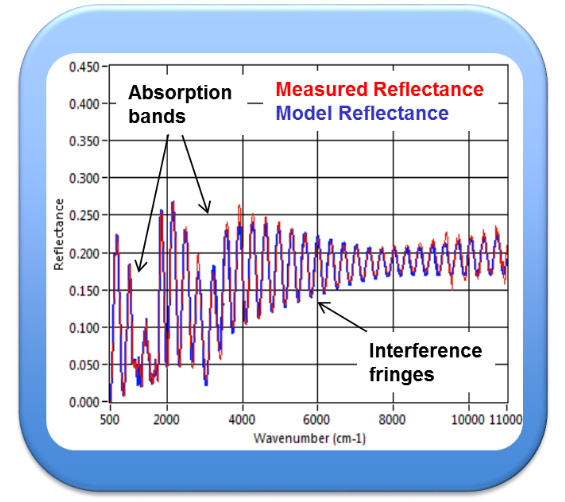 Figrue 4. Measurement results
Figrue 4. Measurement results
PROCESS APPLICATIONS
The infrared spectral range is sensitive to free carriers, molecular vibrations and interference effects from the various thin films and etched structures on the wafer, enabling the technique to be employed for a wide range of semiconductor applications. By applying the effective medium calculations for 3D structures the technique has capability to scale with future technology nodes.
| Memory Applications |
|
|
|---|---|---|
| Doped EPI and Implant Applications |
|
|
| HAR Trench and Via Applications |
|
|
| 3D Integration Applications |
|
|
| BEOL Film Applications |
|
|
| EPI Applications |
|
FEATURES
- Non-contact, non-destructive optical measurement method
- Model-based technique
- High throughput
- Mid-IR to Near-IR wavelength range enables key applications
- Proprietary optics that eliminate backside reflection for high accuracy
Product Line
IR
The Semilab AMS IR family of products uses proprietary model-based infrared reflectometry to measure thickness, depth and parameters of etched and recess filled trench structures with nanometer precision. It can also measure epitaxial layer thickness with angstrom precision even at 30 nm and below.
Products
SEIR-3000
The SEIR-3000 uses proprietary model-based infrared reflectometry (MBIR) and Spectroscopic Ellipsome-try (SE) technology to deliver high throughput, low COO, non-contact, non-destructive measurements of the 3D geometry structures and uniformity of doped epitaxial layers and films used in integrated circuit manufacturing. The small spotsize makes the tool suitable for measurements of scribeline test structures. The unique hybrid SE-IR technology and analysis capability of the SEIR-3000 enables measurement capability of challenging structures and film stacks.
Features and System specifications:
- Scalable measurement capability at all technology nodes
- Capable of mixed 150/200 mm or 200/300 mm operation under software control
- Windows-based software with menu-driven recipe selection/generation
- Cognex Patmax© pattern recognition
- Camera-based autofocus
IR-2100, IR-2200, IR-2500, IR-3200
Extended wavelength model-based infrared reflectometry with high throughput, low COO, non-contact, non-destructive measurements of thickness and uniformity of dielectric layers and etched structures used in integrated circuit manufacturing. The unique technology and analysis capability of the IR product line, simplifies system calibration requirements and removes the effect of substrate variations for key layer measurements.
Features and system specifications:
- Product series and sample size:
- IR-2100: Coupon size up to 300 mm
- IR-2200: 150/200 mm, with one open cassette or SMIF loadport
- IR-2500: 300 mm, with one FOUP loadport
- IR-3200: 200/300 mm, with two open cassette, SMIF or FOUP loadports.
- Each product is available with one of the following MBIR optics:
- The large spot optics are mainly used for films or for measurements in the device area of patterned wafers.
- The small spot optics enable measurements of scribe line test structures on patterned wafers.
- Cognex Patmax© pattern recognition
- Camera-based autofocus
- Robust glowbar/halogen source with a lifetime > 3 years
- Conformity:
- EMC directive
- Low voltage directive
- SEMI standards compliant
- Windows-based software with menu-driven recipe selection/generation






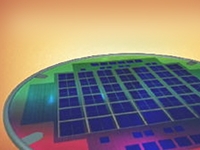 Figure 2. Patterned wafer
Figure 2. Patterned wafer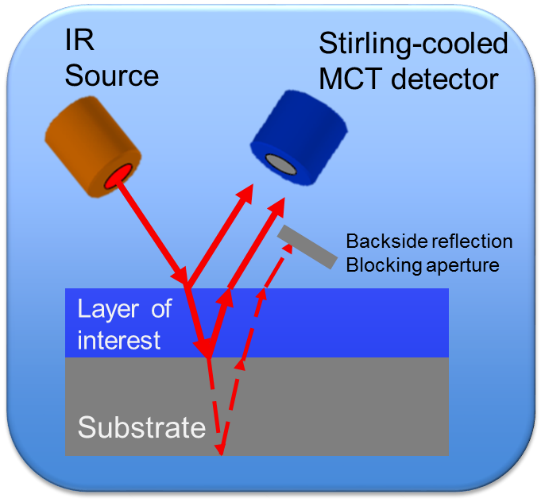 Figure 3. MBIR technology
Figure 3. MBIR technology